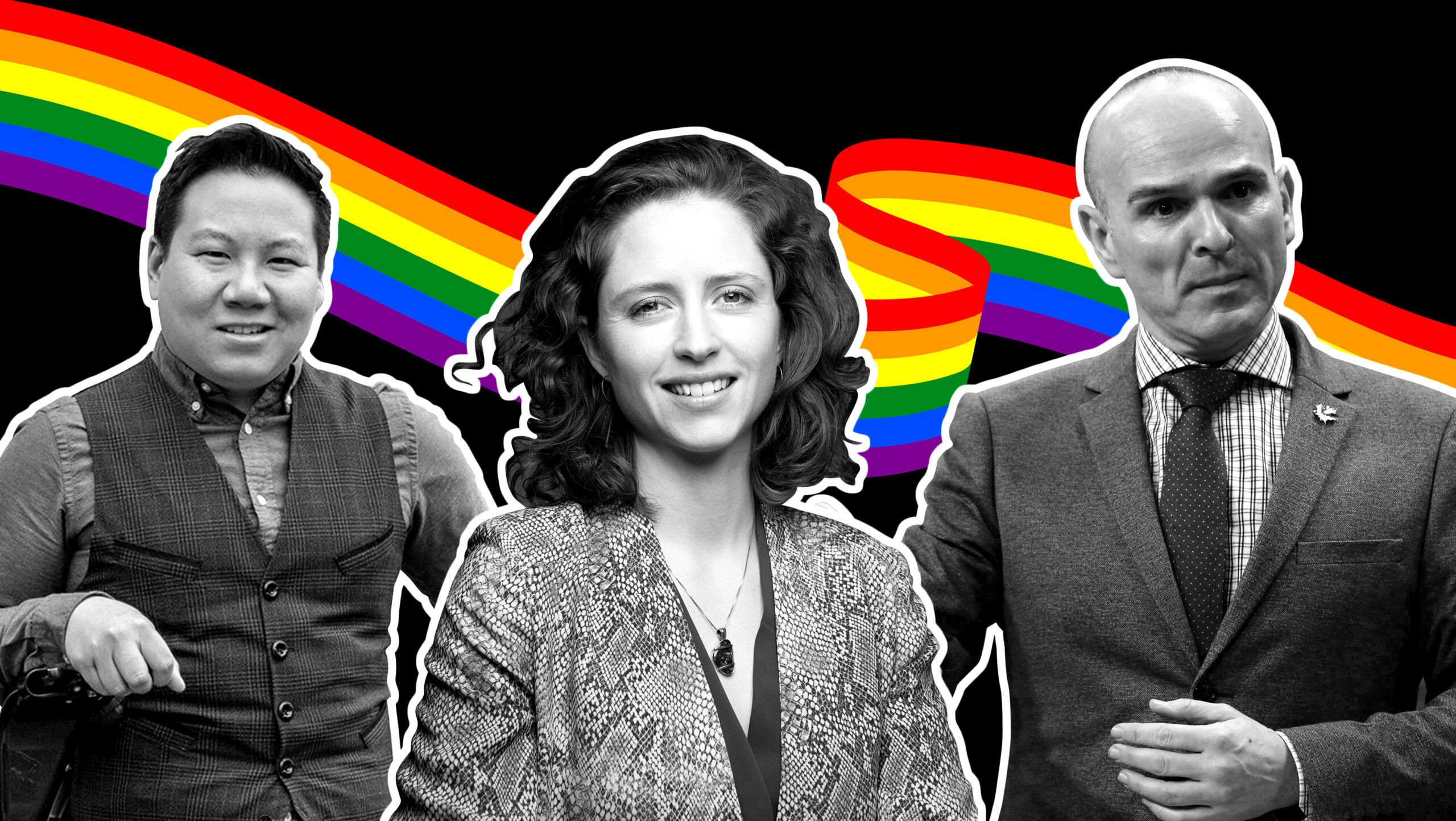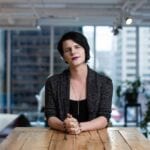This federal election, dozens of LGBTQ2 people across the country are vying for a seat in the House of Commons. It’s a chance to improve the representation of queer and trans people in Canada at the highest level of government—which, before the election, sat at just one percent.
As part of our extensive coverage of the election, Xtra sent out a survey to every publicly identified LGBTQ2 candidate running for a major party. The questions are intended to help better understand who the candidates are, how they would describe the key issues affecting our communities and why queer and trans political representation matters.
While not all candidates responded, we created a comprehensive list of all openly LGBTQ2 candidates running across the country.
Here is everything you need to know about this election’s LGBTQ2 candidates.

Party breakdown
Across major parties, we identified 74 publicly out candidates—compared to just 20 candidates in the 2015 election. Of those 74 candidates, 44 completed the questionnaire. (Two candidates who are out in some capacity but not entirely also participated in the survey; their responses have been redacted at their request.)
The NDP has the highest representation of all major parties, sitting at 40 candidates, while the Green Party sits in a distant second at 18. (Though the Green Party has stated they have a slate of at least 27 LGBTQ2 candidates, only 18 have identified as such publicly.) The Liberals have 10 out candidates, followed by the Conservative Party with four, and the People’s Party of Canada with two. It is important to note that while these are the official numbers as best we could determine them, many candidates—including some we spoke with—are not out publicly; a key reminder that we still have a very long way to go in terms of LGBTQ2 inclusion in this country.

How do they identify?
Of those who completed our survey, 56.8 percent identified as gay, 20.5 percent identified as bisexual or pansexual, 15.9 percent as lesbian, 6.8 percent as Two-Spirit and 36.4 percent as queer.
For the first time in Canadian political history, there are at least five openly trans and non-binary candidates running for federal office under a major party.
While diversity in candidate sexual orientation has certainly come a long way, LGBTQ2 candidates are still predominantly white, with 32 of the 44 candidates who completed our questionnaire identifying as Caucasian. Six identified as people of colour, four as Indigenous and two as Black.
Diverse representation, to the extent that it exists, is spread out across all parties—with the exception of the Conservative Party of Canada whose four LGBTQ2 candidates are all white, cisgender gay men.

What are the major issues they’re hearing about from LGBTQ2 communities?
We heard a wide variety of priorities and issues from LGBTQ2 candidates. Many emphasized the importance of banning conversion therapy and ending the blood ban.
“[This first thing I’d do if elected is] finally ending the blood donation ban for men who have sex with men. We know that not all gay men carry HIV, and for those whose viral loads are undetectable—in the absence of other scientific evidence being presented to change my mind—I don’t see any reason to discriminate on the basis of one’s sexual partners’ genitals.” —Jacqui Wiens, NDP, Orléans
“The recent national petition to ban conversion therapy came out of Lethbridge [where I am running], so this is a hot topic here. I have learned that many people close to me or involved on my campaign have gone through various forms of conversion therapy; better understanding how this happens in my riding will help me to be a part of figuring out how to deal with it on a national level.” —Amy Bronson, Liberal Party, Lethbridge
Candidates consistently brought up the need for a stronger LGBTQ2 lens within federal legislation and policy, and identified this as part of what they hope to accomplish as LGBTQ2 members of Parliament.
“I was surprised to hear that I was the only openly queer candidate for the Liberal Party in B.C. I have been very inspired by other candidates in the party who are LGBTQ2 allies, but I think it is also critical to have queer and trans representation in government. Diverse perspectives are needed for solutions that benefit everyone.” —Kyle Demes, Liberal Party, Vancouver East
Candidates also identified youth issues as a priority area, particularly with regards to young people in rural communities, as well as the rates of homelessness, poverty, poor mental health and substance use among trans young people.
“LGBTQ2 youth are among the most likely to live in poverty, be homeless, and commit suicide. This is a result of outdated rules in shelters, insufficient and unspecialized wellness services, and persisting homophobia and transphobia.” —Geo McLean, Green Party, Sault Ste. Marie
Improved access to gender-affirming healthcare, including hormones and surgeries, was identified by numerous candidates, alongside the need for targeted efforts to improve trans inclusion and awareness in particular.
“So many of us struggle to pay for our prescription medication and access healthcare. While acceptance of our communities has grown, we still experience discrimination and violence. For Indigenous, Black and racialized members of our communities, the difficulty only increases. Our trans and non-binary siblings still struggle to find affirming medical providers. In my own community, the medical professionals helping people access [hormone replacement therapy] are struggling to keep up with the demand for care. Access to gender-affirming surgery takes years of waitlists and endless consultation. Too many roadblocks to care exist because the medical community still does not know how to immediately affirm queer and trans identities.” —Shandi Bleiken, NDP, Lethbridge
More than anything, though, candidates emphasized that the fight for LGBTQ2 rights and equality is far from over, and that LGBTQ2 voices need to be present in Parliament to keep our issues on the radar. It’s the only way, they say, to ensure the battle for equality is not forgotten but furthered in Canada’s next government.

We asked: What does it mean to you to be an LGBTQ2 candidate in this federal election?
We received a diversity of responses from candidates about why running in this election matters to them, and why they think it’s important to run as LGBTQ2 individuals. Here’s what some of them wrote:
“Earlier this year, I came to realize that if I wanted queer, racialized representation in Ottawa, I would have to be brave enough to step up and run. We can’t rely on others to speak for queer and racialized people, because they often get it wrong. It was important for me to step forward and show that my voice and the voices of other racialized LGBTQ2 people are invaluable and deserve a seat at the table.” —Brian Chang, NDP, Toronto Centre
“As an openly gay candidate—and the first openly gay candidate to run in Alberta—the 2015 election was significant as it showed that indeed my identity was not a barrier to representing the people of Edmonton Centre. Although my identity contributes to the lens I bring to the table, the work we stand for and the values we aim to promote are what ultimately is important for a candidate to represent. The visibility in being a gay Albertan, I hope, encourages and reminds folks that diversity is a fact of life and it exists in society and has existed in society for millennia. I am consistently hopeful that we are building a better future for the generations after us.” —Randy Boissonnault, Liberal Party, Edmonton Centre
“I feel extremely lucky and grateful to the elders in our community that fought for our rights. It’s such a privilege to run for office and be able to continue to advocate for our communities. I also realize that in running in Vancouver Centre, I am in a sparkling bubble, and that not everywhere is as warm and accepting for out candidates, and so I applaud the extra emotional effort required for them on the campaign trail.” —Jesse Brown, Green Party, Vancouver Centre
“I am a gay man and I am running in a rural riding. This is only possible because of people like Svend Robinson, Libby Davis and Harvey Milk—and this is not lost on me. I owe it to those who ran before me as openly queer candidates not to run away from my identity as I am part of a legacy of a community that has fought hard for and continues to fight for every right and every ounce of support that we have. I ran because of how much this community embraced me and my spouse after we moved here, and I felt I could offer something back. My experience as a gay man raised working class by an immigrant and a woman who grew up going without is what made me political. It is what led me to activism and it is why I care about lifting up the marginalized.” —Konstantine Malakos, NDP, Glengarry–Prescott–Russell

While we have all these LGBTQ2 candidates, are many of them likely to win?
The short answer: No.
Of the LGBTQ2 candidates running in this election, only five are incumbents, and too many are running in ridings where their parties have historically struggled to get a significant share of the vote. When we talk about LGBTQ2 representation in this federal election, we also need to talk about how candidates from our communities are competing in ridings they’re not likely to win. Despite a wonderful increase in LGBTQ2 representation amongst candidates, with the majority running for the NDP and the Green Party—the two major political parties polling the lowest—and the least representation among the Conservatives, we might actually end this election with fewer LGBTQ2 representatives in the House than the record-breaking six elected in the last election.
Read all of the candidates’ answers in a spreadsheet or in PDF view.


 Why you can trust Xtra
Why you can trust Xtra


